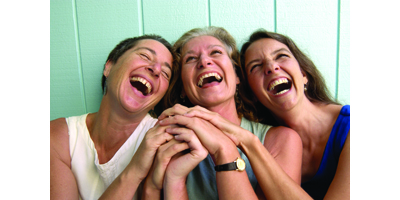Everyone loves a good laugh even though people don’t all laugh at the same things. Different kinds of “funny” appeal to different senses of humour. Some find slapstick hilarious. Others are amused by satire and parody. Still others love such wordplay as puns.
Historically, humour has been viewed as either “popular” or “intellectual.” Popular humour is rooted in homey, often vulgar, situations. Intellectual humour speaks to those with the appropriate knowledge to “get” the joke.
Both trends are traced back to 1475, to Geoffrey Chaucer’s Canterbury Tales. However, their roots certainly go much deeper. The fool of ancient Britain is a key example of popular appeal. The bard, or ballad singer, often aimed his wit at the more learned in his audience.
In the Elizabethan era (1558-1603), when Shakespeare was writing, much of the humour depended on wit, although Elizabethans also appreciated things bawdy. Shakespeare offers both in his plays.
By the 18th century, political satire ran rampant in England. As well, much 18th-century humour revolved around ideas associated with reason, moral behaviour, social standards, etc.
In the Victorian Age (1837-1901), England began to laugh both at herself and at the peculiarities of foreigners. Victorian humour is easily analyzed by studying Punch magazine, first published in 1841.
When Punch began, it was profoundly anti-monarchist and politically radical. Within 20 years, however, it was focusing on Britain’s middle class with its humour turned inward giving Britons a good laugh at themselves.
North American humorists latched onto this Victorian model of parody and illusion to laugh at their own home-grown foibles.
During the 1800s, the English music hall flourished. Clowns, mimics and ballad singers were featured. These performers were the ancestors of today’s stand-up comics as well as of such great silent movie comedians as Charlie Chaplin and Buster Keaton. One famous music hall performer, perhaps remembered by some readers, was Harry Lauder.
In addition to the afore-mentioned popular and intellectual classifications of humour, other opposing types can be traced throughout humour’s history. So, we have oral versus written, performed versus creative, and domestic versus wide-ranging humour. Oxford calls these opposing tendencies, “the many-stranded traditions of humour.”
Humour also springs from a multitude of places and situations — anecdote, folk-tale, dialect, rural and urban areas, workplace, the political arena, slips of the tongue, and even disaster.
Sometimes, what is considered funny goes out of style or is recognized as unacceptable. A 1939 joke book in my library has an entire section devoted to ethnic jokes. Of these, 226 are about blacks. Today, no publisher would print even one of these jokes. For good reason. Not only is the “N” word used, but many jokes are put-downs and insults. Many portray blacks as inferior.
This idea of good taste in humour is new. For centuries, it was acceptable to make fun of anyone who was different. Still, comedians tread a tricky path since they’re also pressured to be politically correct.
The word, humour, entered 14th century English via French from the Latin, humor (moisture; body fluid; temperament). The original English meaning was, “disposition; temperament.”



